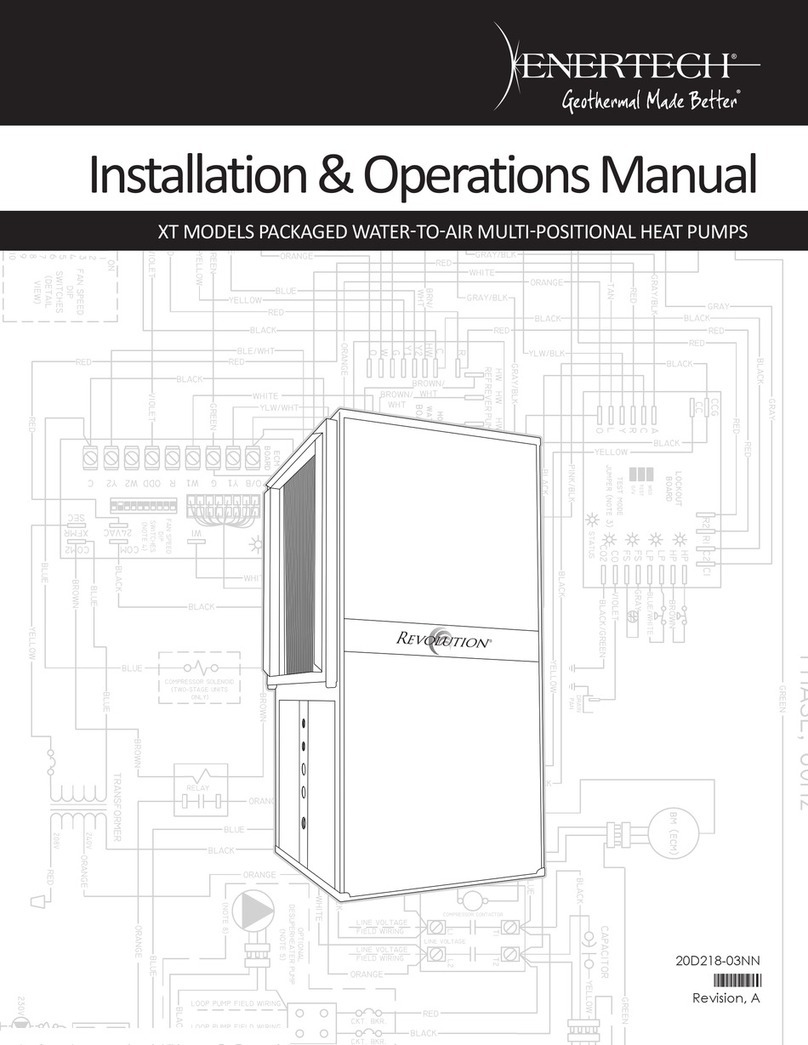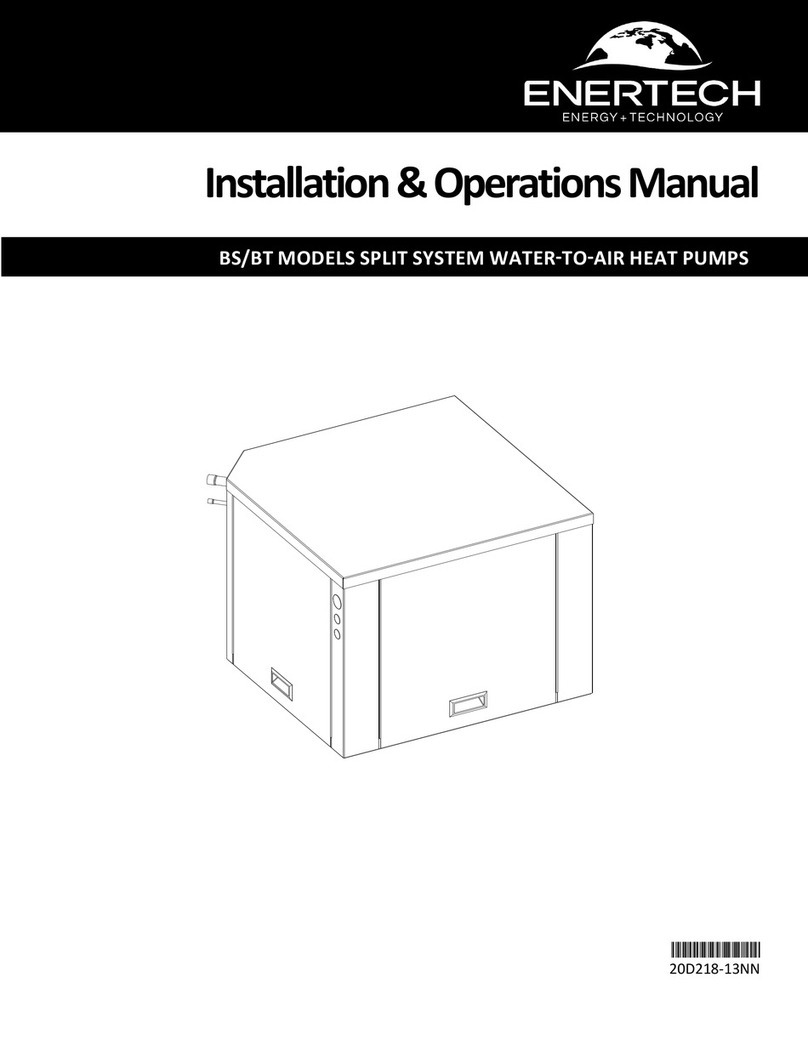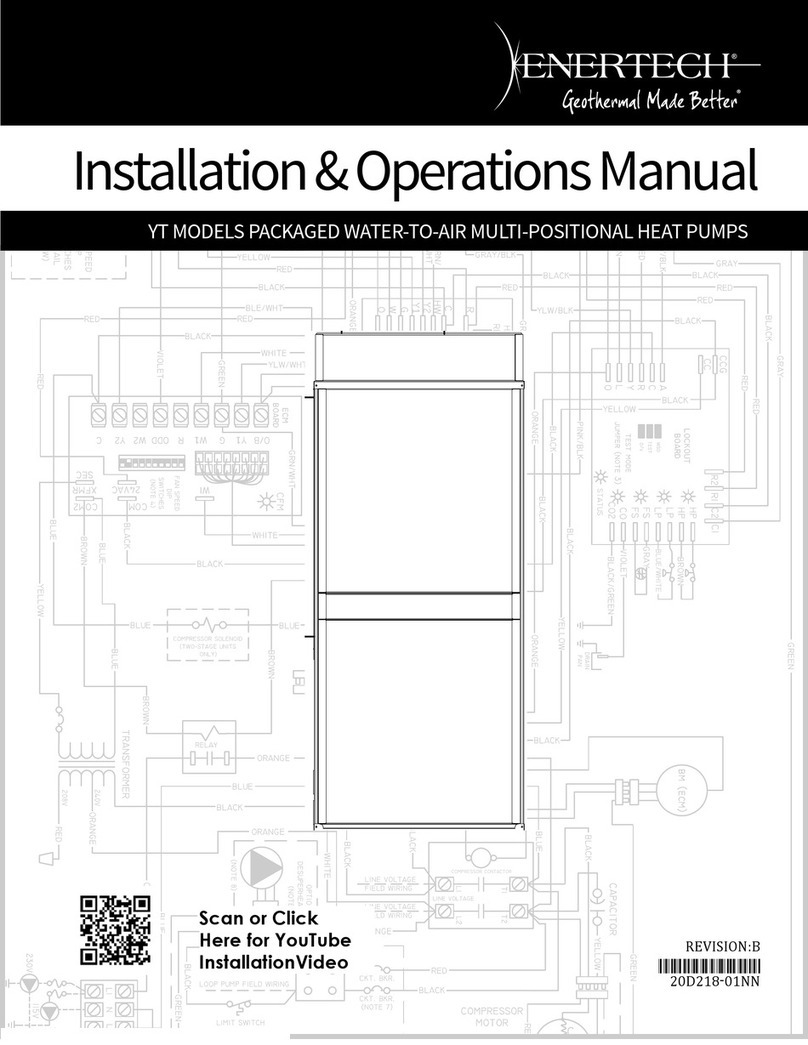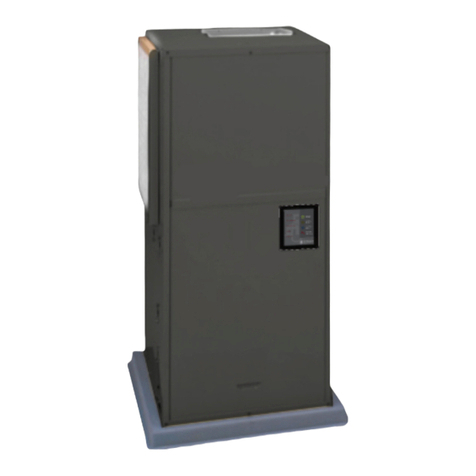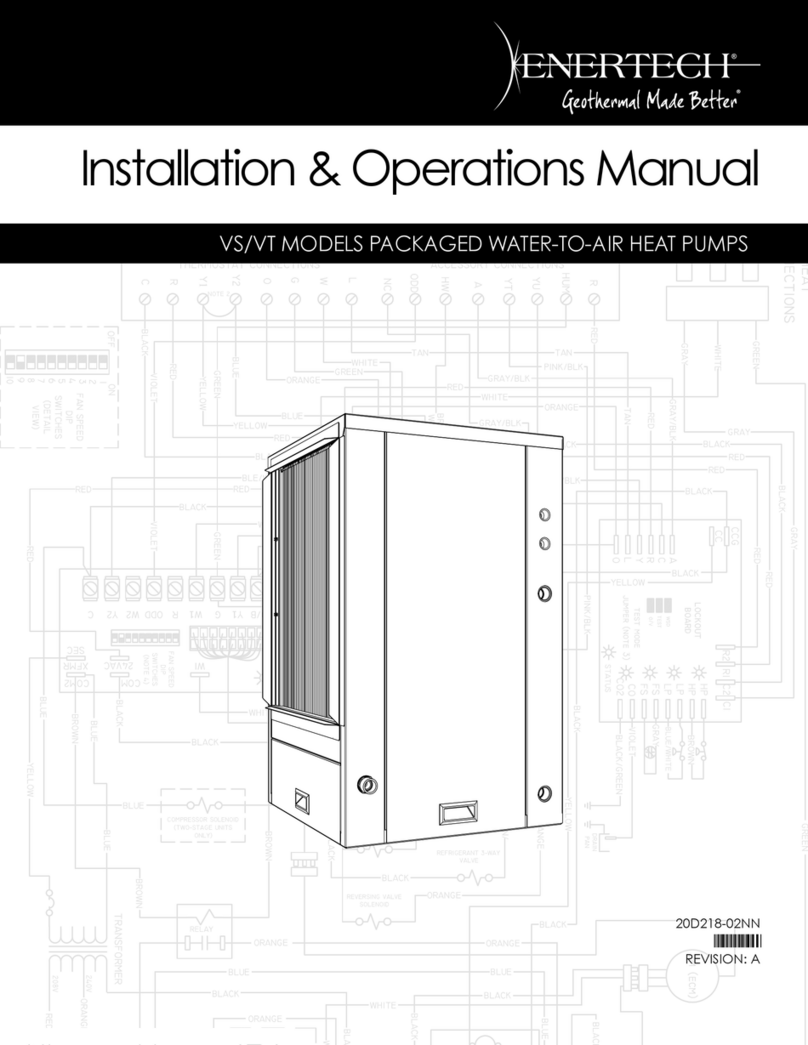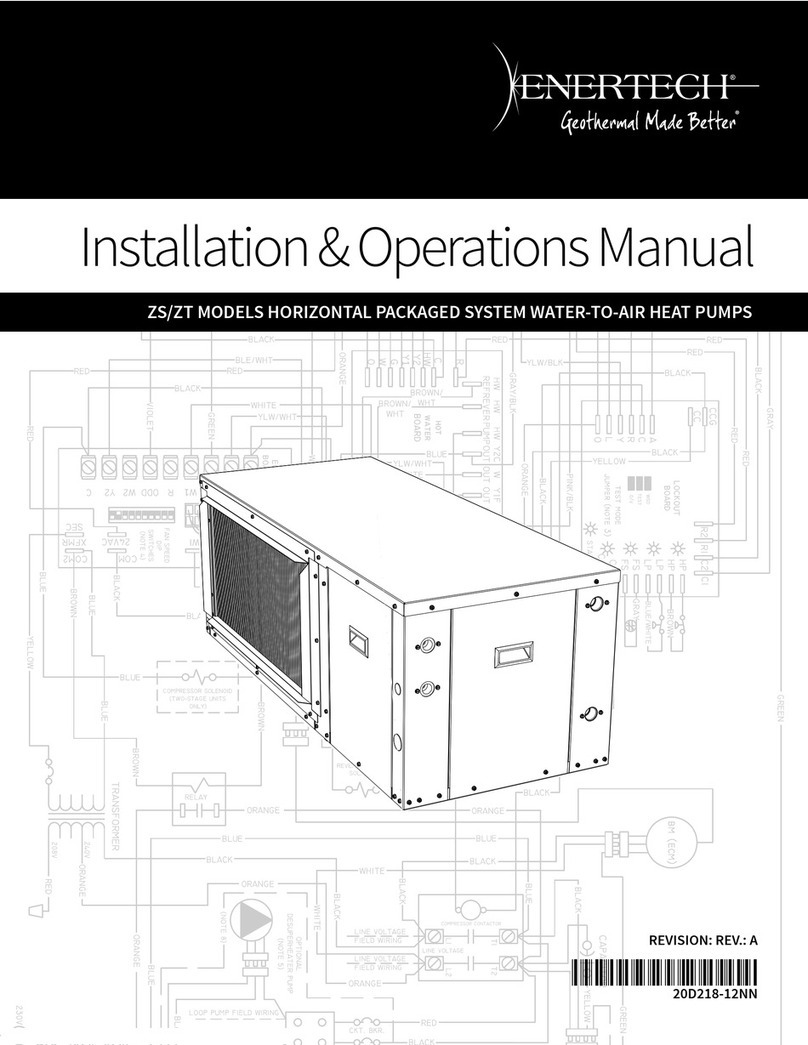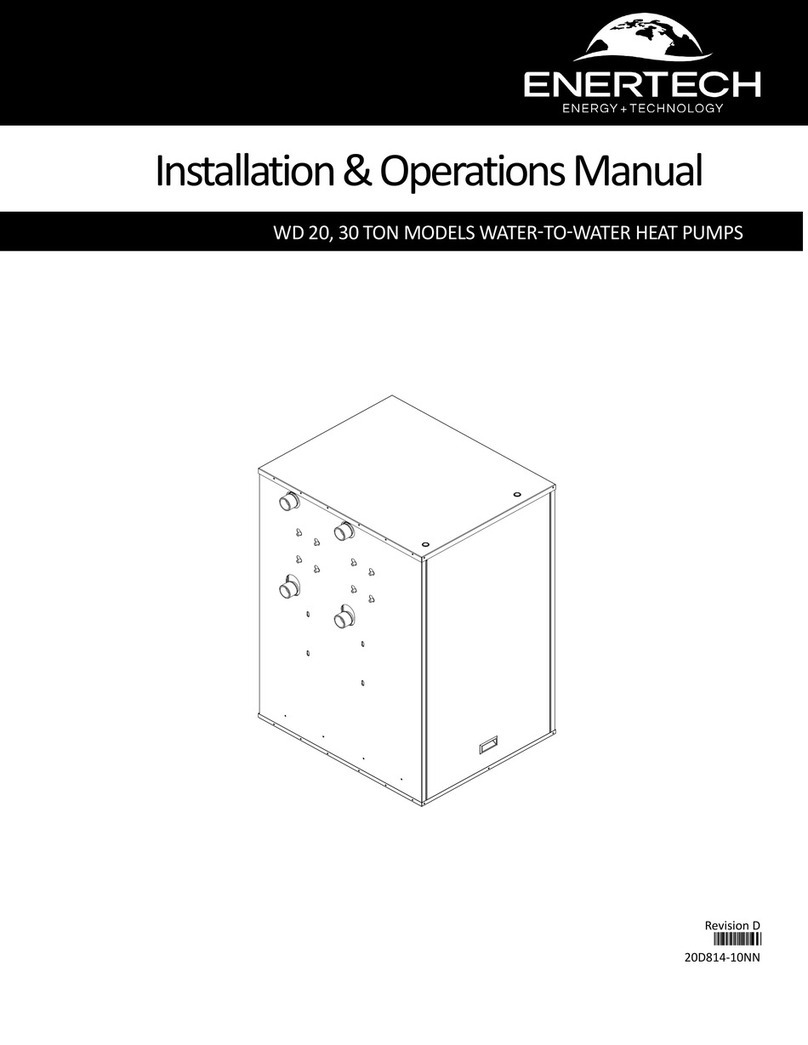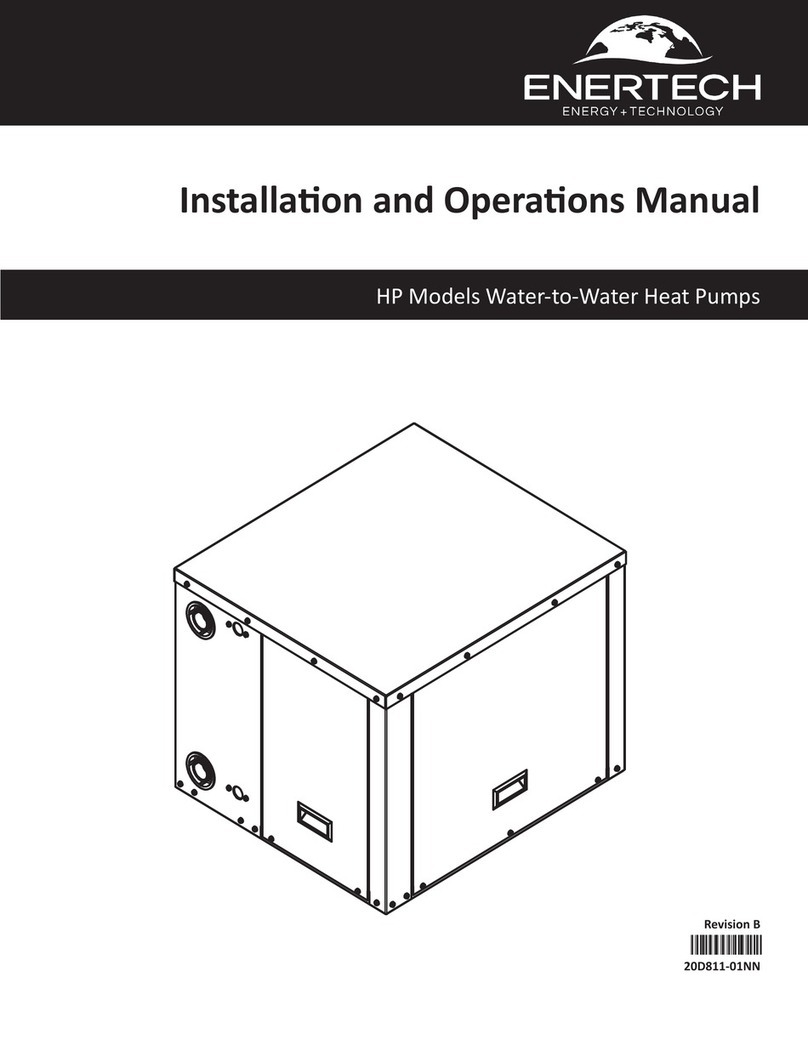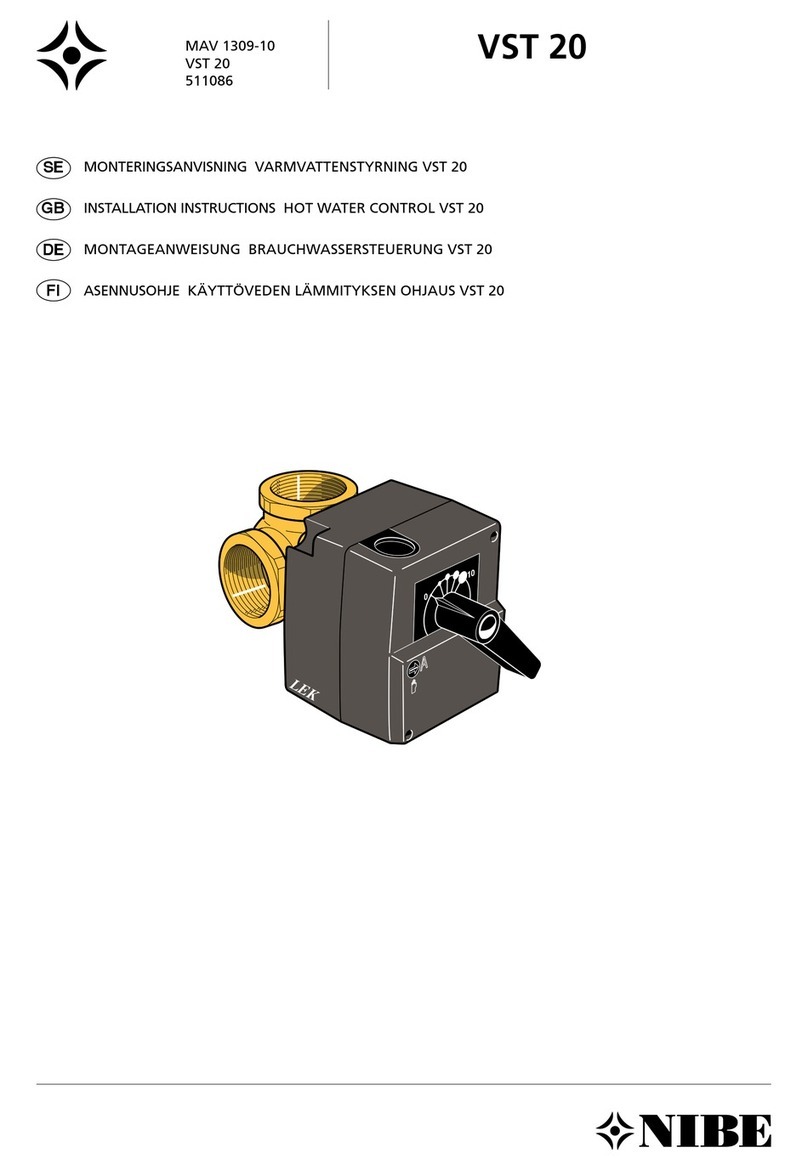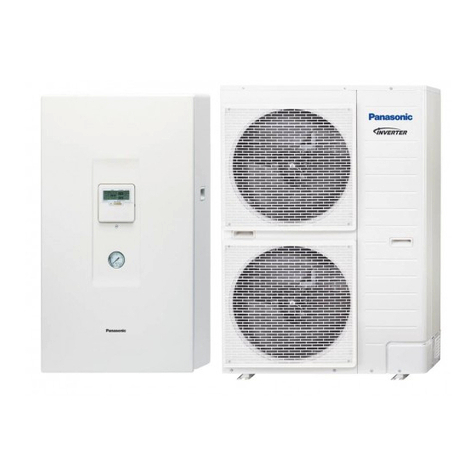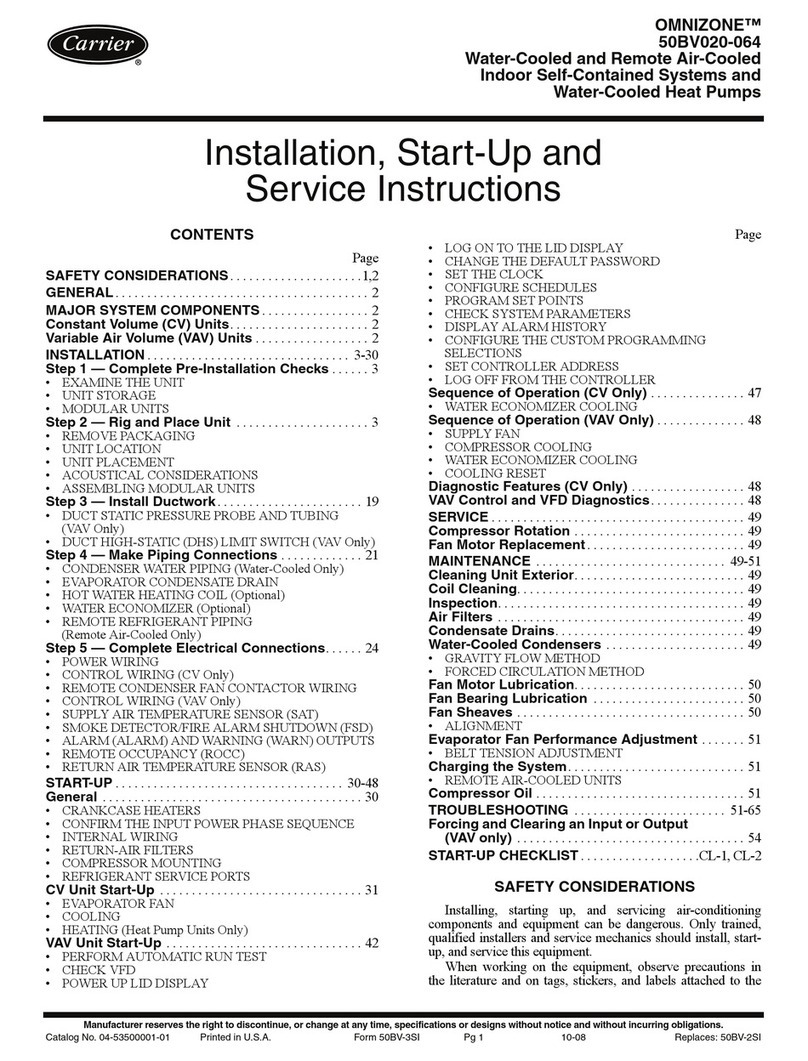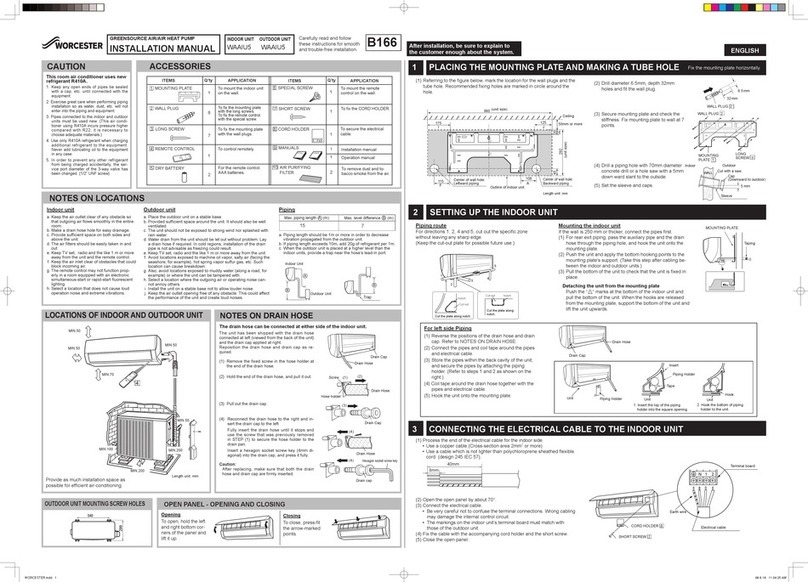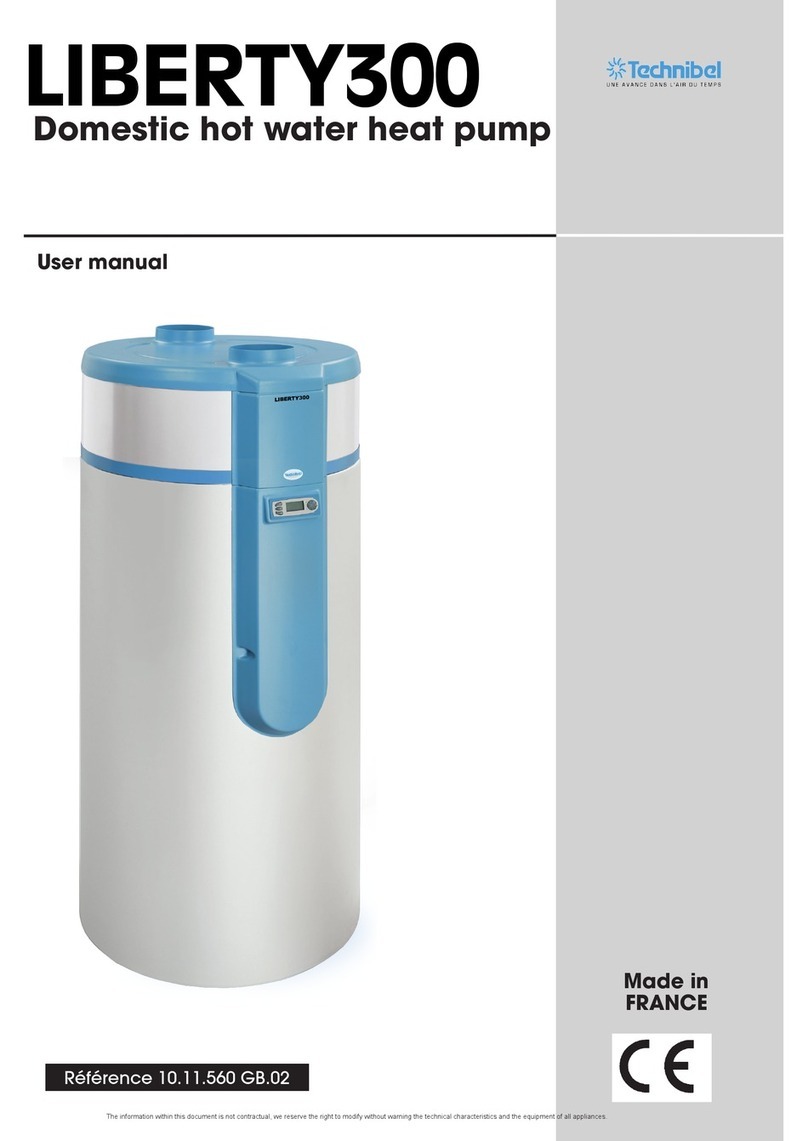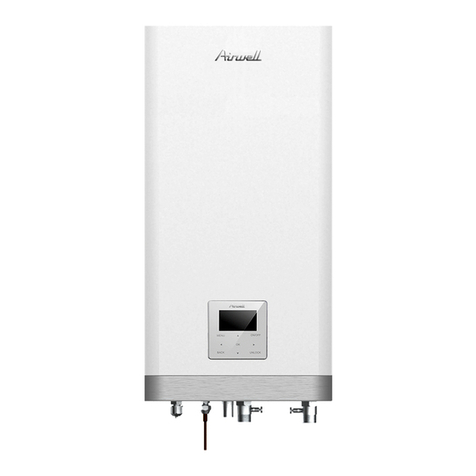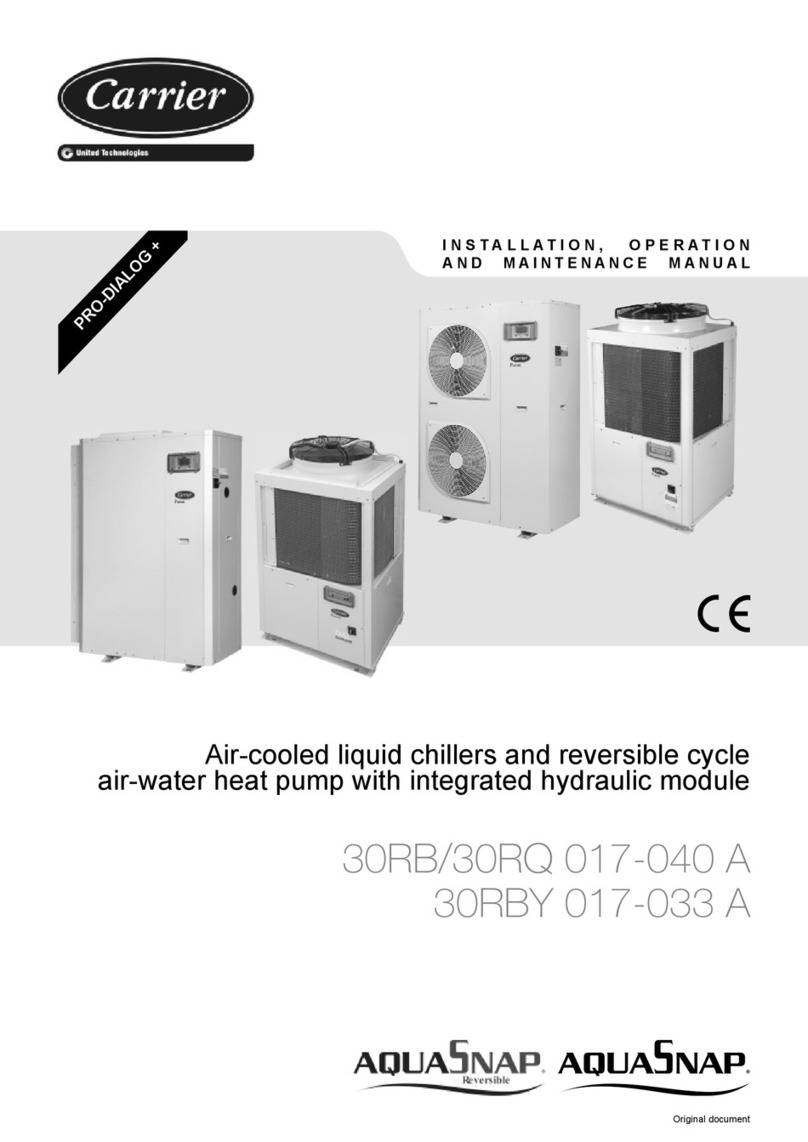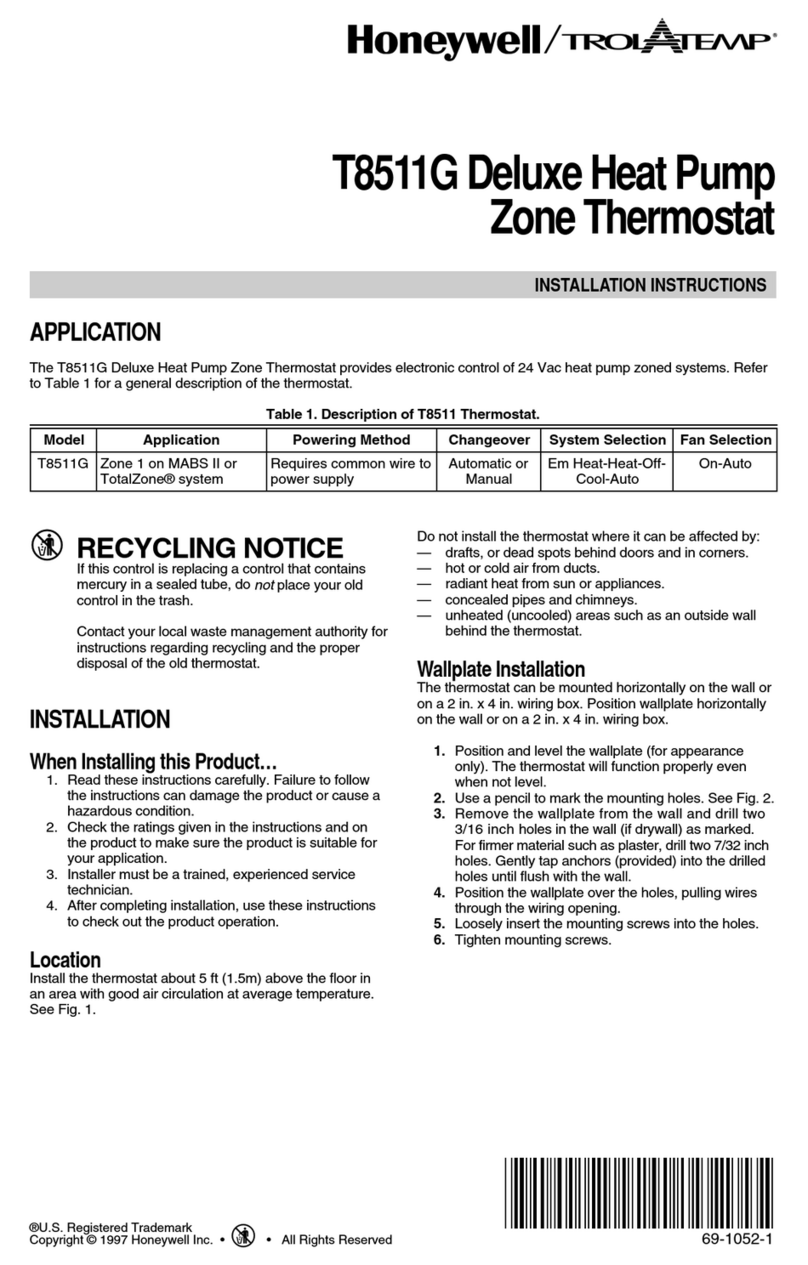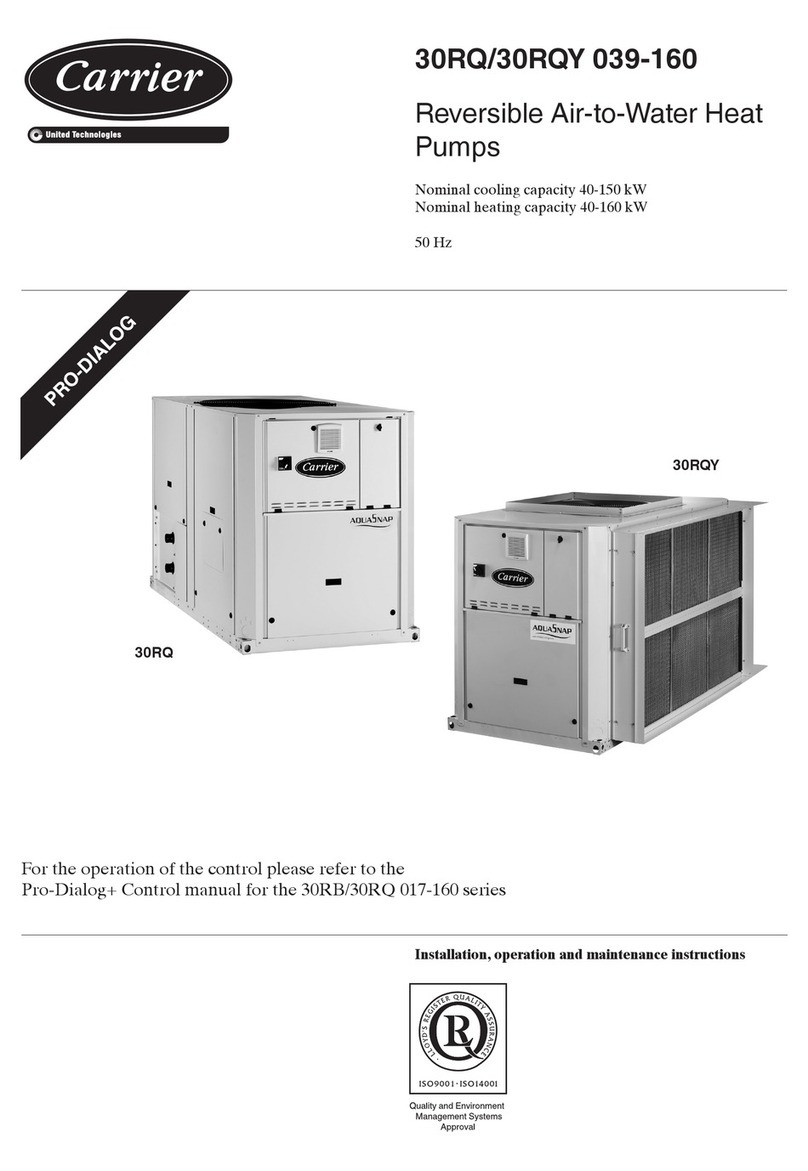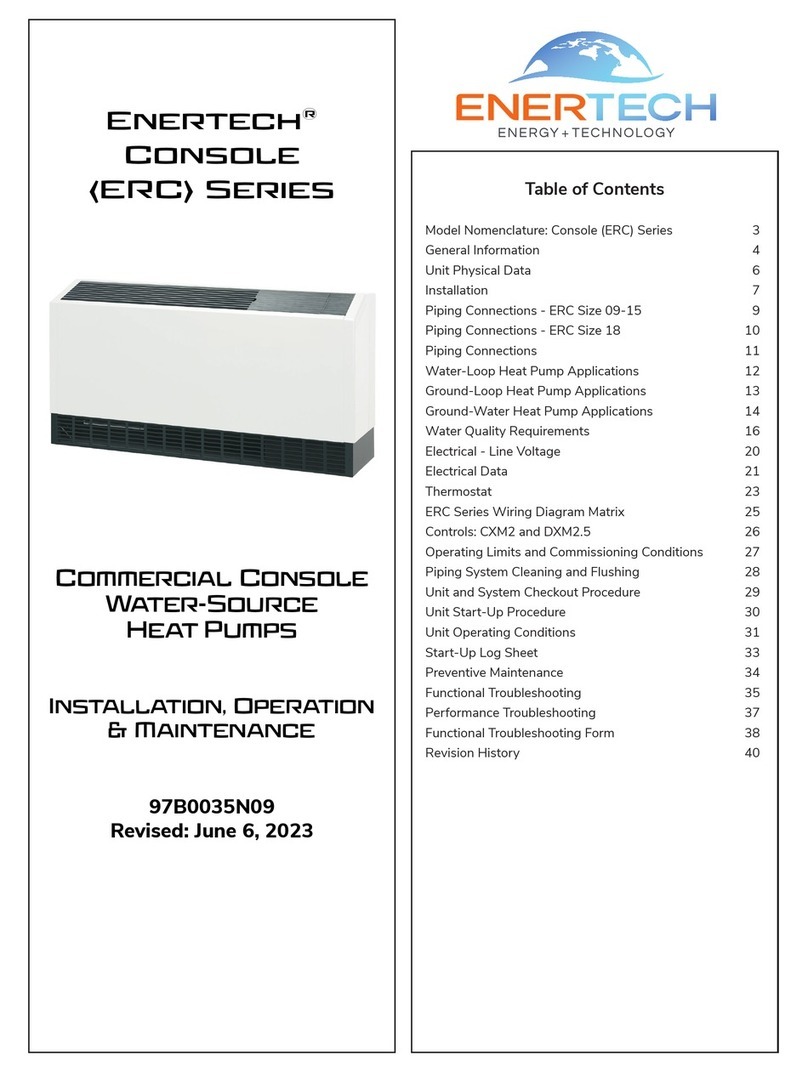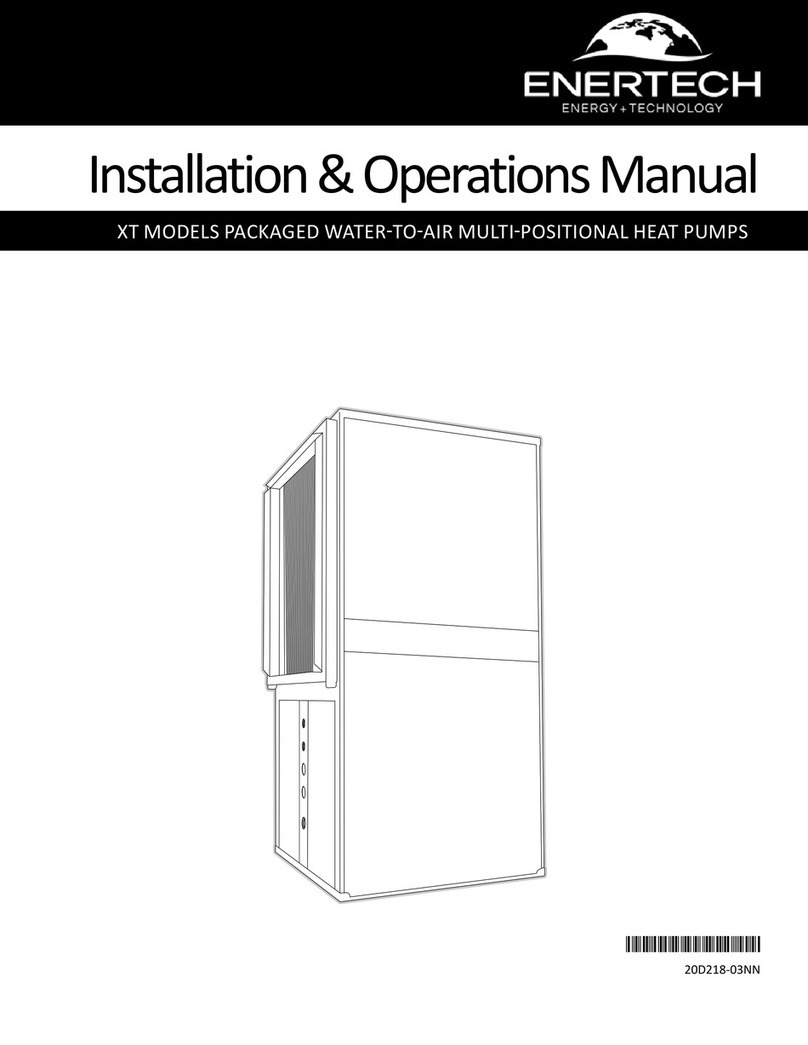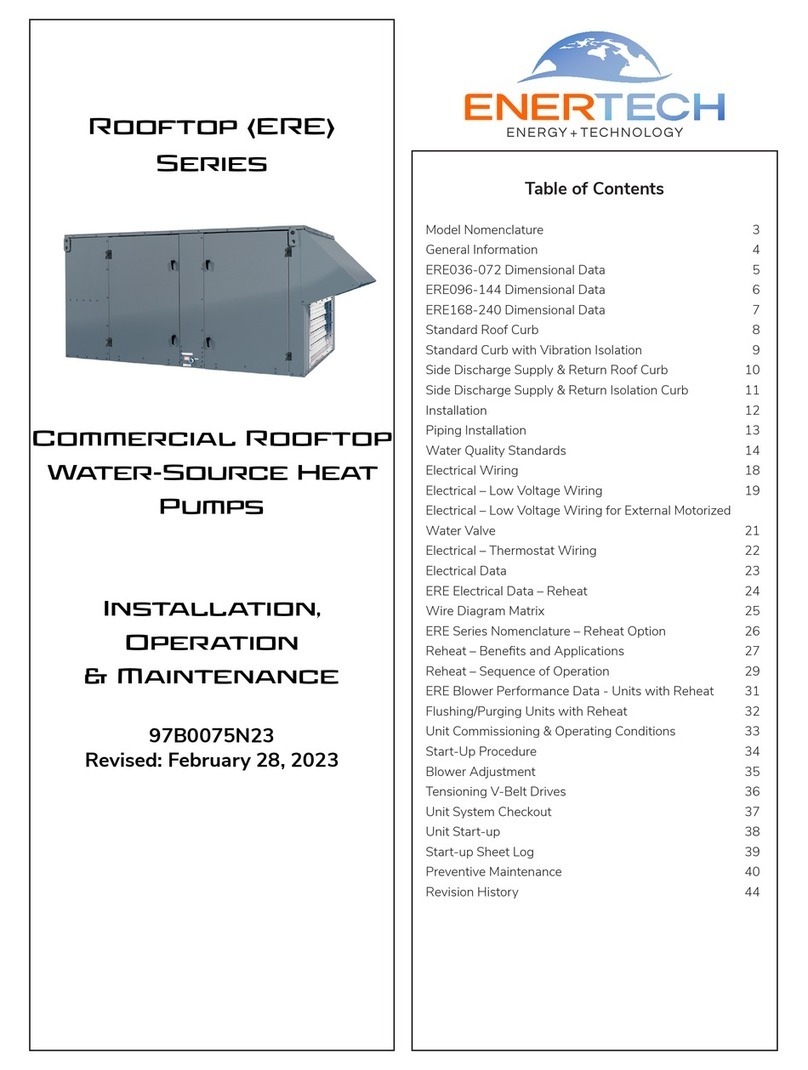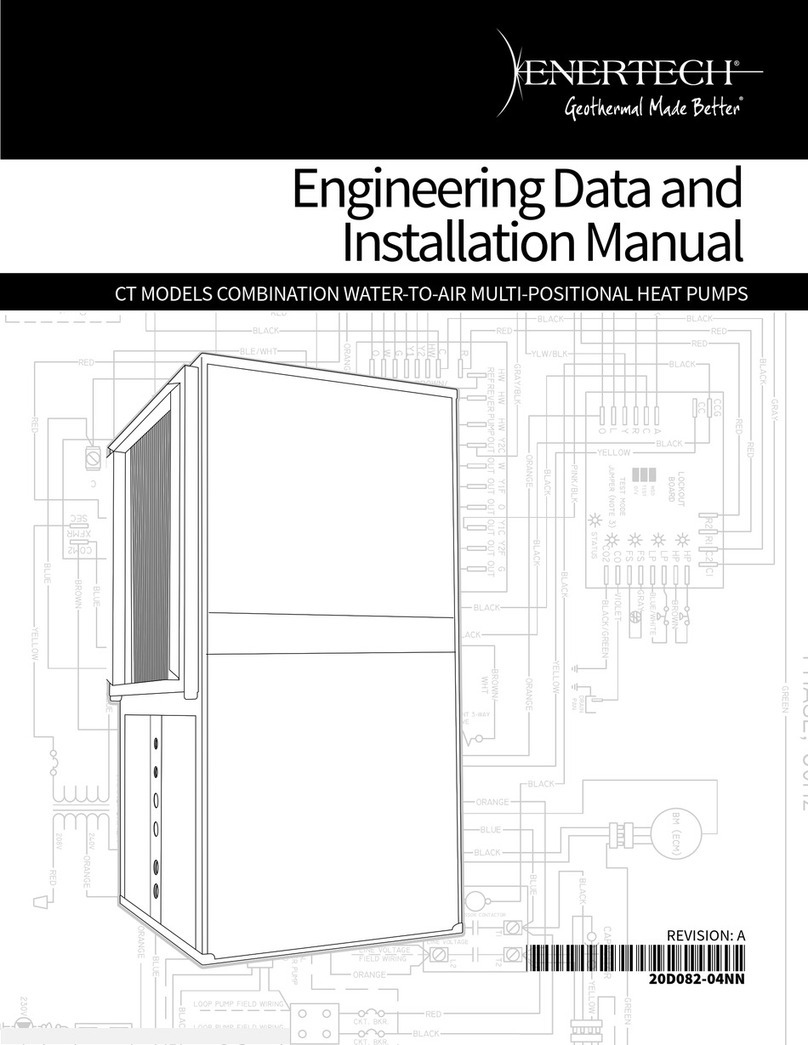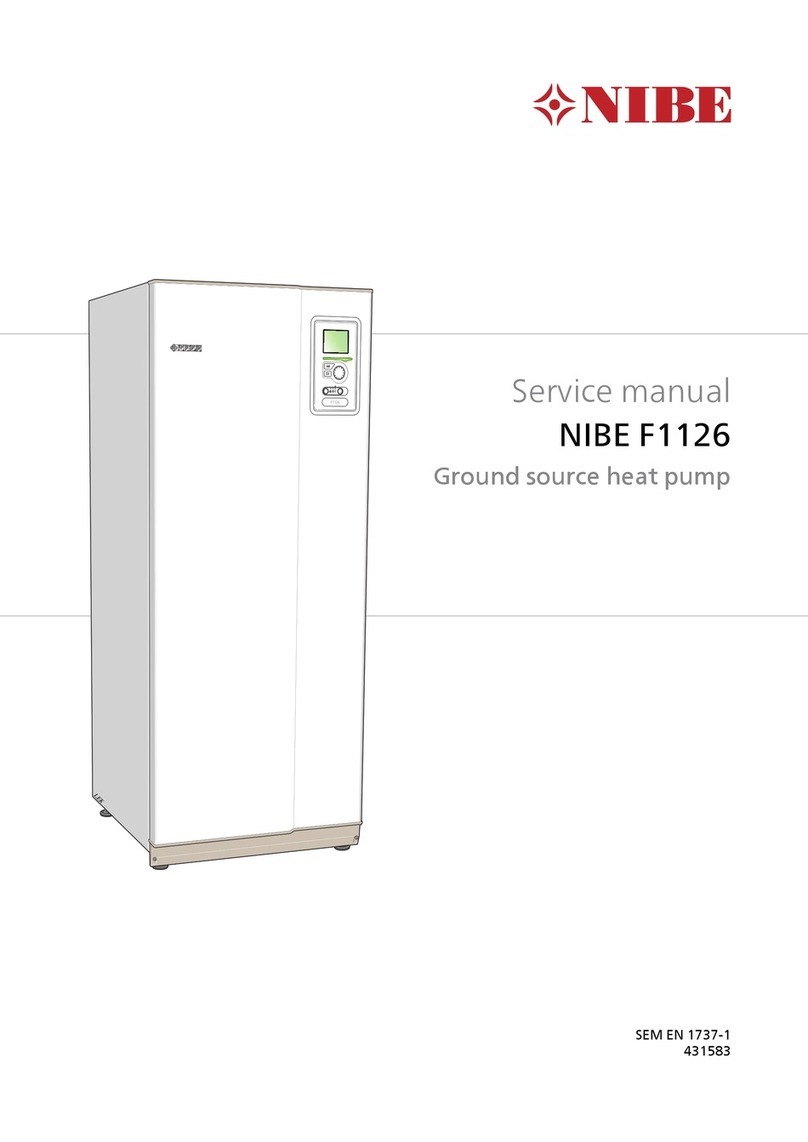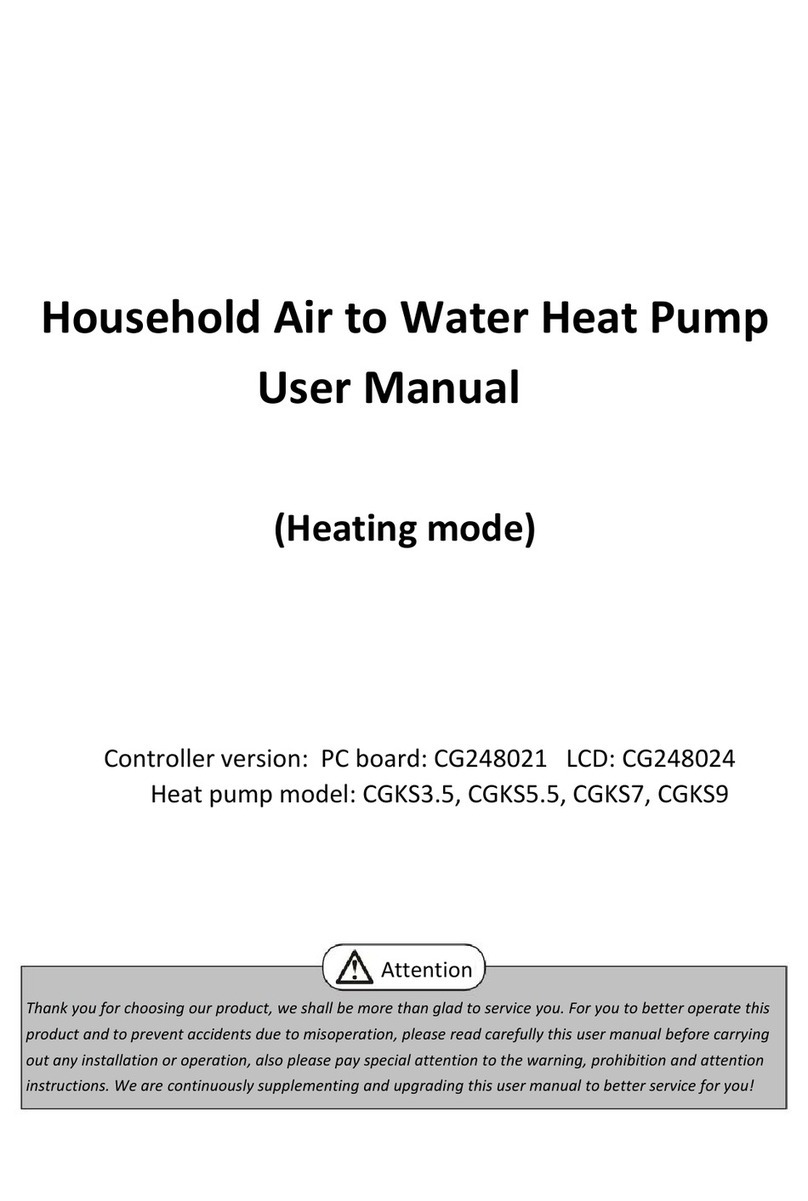O!
problems with multiple zone hydronic systems.
The only instance where a storage tanks is not
required is when the heat pump is coupled to a
large heat exchanger containing the recommended
amount of fluid capable of absorbing the entire
capacity of the heat pump.
Important –The hydronic flow into the storage
tank (particularly a water heater) must not be
restricted. If the water heater has an internal
diffuser “dip tube,” cut it off at approximately 12
inches into the tank.
Tank temperature can be controlled with a simple
set point controller such as an Aquastat.
IbKX\2#=!B#KQ!=#X=V)U9\XB!
Hydronic circulator pumps transfer the energy
supplied by Enertech hydronic heat pumps to the
water storage tank. Select a quiet operating pump
with the ability to supply the required flow rate at
the system pressure drop. The circulator supplying
the heat pump must be placed in the water supply
line into the unit to provide the best pump
performance. Individual zone circulators must also
be placed in the supply lines of the heat exchangers
they serve. These pumps are often used as the
on/off control mechanism for the zone they supply
as shown in Figure 4. Zone valves are also
commonly used for this purpose using a common
pump as shown in Figure 5.
!CAUTION – Never operate with hydronic flow
rates less than specified. Low flow rates, or no flow,
may cause the unit to shut down on a pressure
lockout or may cause a freeze rupture of the heat
exchanger in cooling mode.
Circulator pumps must be sized to provide the
required flow to a heat pump heat exchanger at its
corresponding system pressure drop calculated
from the pressure drop through the piping, plus
the pressure drop of the water storage tank, and
plus the pressure drop through the heat pump heat
exchanger. See the Engineering Specification
section for water flow requirements and pressure
drop. Use these tables for sizing the circulating
pump between the hydronic side of the heat pump
and a storage tank.
A common problem with circulator pumps is
trapped air in the system. This air accumulates in
the suction port of the circulator causing
cavitations in the pump, which leads to premature
pump failure and noisy operation. The air can be
eliminated by completely purging the system or
by placing an air separator in the plumbing lines.
The entire system must be purged of air during
initial installation and pressurized to a 10-25 psig
static pressure to avoid air entering the system.
This static pressure may fluctuate when going from
the heating to cooling modes but should always
remain above zero. If a leak in the system causes
the static pressure to drop, the leak must be
repaired and the system repurged to assure proper
system operation.
The hydronic side circulator supplying the heat
pump should be controlled to run only when the
compressor runs. If the pump is allowed to
circulate cold water through the system during off
cycles, the refrigerant in the heat pump will
migrate to the hydronic side heat exchanger. This
can cause heat pump starting problems (especially
when this refrigerant migrates into the condenser).
=#X=V)U9#\2!P)V#K!
The fluid circulating through the hydronic side of
the geothermal heat pump system is the transfer
medium for the heating and cooling being supplied
to the conditioned space. Selection of this fluid is
very important. Water is the most readily available
fluid but has the drawback of expansion during
freezing which can damage the system. System
operation in the cooling mode, extended power
interruption to a structure, or disabling of an
outside zone (such as a garage floor) provides the
opportunity for freezing the circulating fluid.
CAUTION – the hydronic side of the system
must be freeze protected to reduce the risk of a
freeze rupture of the unit. A propylene glycol
based antifreeze (readily available through HVAC
wholesalers) and water solution is recommended.
A non-flammable antifreeze solution is
recommended for use on any hydronic system
where heat is being added to the system for
structural heating purposes. Freeze protection for
the hydronic side fluid down to 18
°F (20%
propylene glycol by volume in water) is




















